Cream cheese
Cream cheese is a creamy, spreadable and fresh cheese with a mild, slightly acidic taste.
There are two main types of cream cheese based on the different fat content:
- double-cream cheese: at least 3 to 5% fat in the initial mix
- single-cream cheese: at least 8 to 12% fat in the initial mix
Double-cream cheese has a more granular structure, while single-cream cheese is easier to spread.
Cream cheese has to have a fat content of at least 33% and may not contain more than 55% of water.
Cream cheese can be eaten as sandwich filling, as well as used for the preparation of several dishes, like salads and desserts. By adding spices, the cream cheese can be given more flavour.
Production cream cheese
Ingredients
Whole milk, cream or a combination of both is used, depending on the desired fat content of the cream cheese. No antibiotics or bacterphages are allowed in the cream or milk, because these can hinder the fermentation process.
For the fermentation process, a combination of Lactococcus lactis subsp. lactis en Lactococcus lactis subsp. Cremoris is used.
To prolong the freshness of the cream cheese, stabilizers are often added such as guar gum, xanthan gum or carrageenan.
Standardize
Depending on the cream cheese which is produced, the milk is standardized on fat content:
- Single-cream cheese: 3 to 5% fat;
- Double-cream cheese: 8 to 12% fat.
Homogenize
The standardized milk is then homogenized with a pressure of 120 to 140 bar at a temperature of 50 to 55°C. Because of the homogenisation, there is little loss of fat during the centrifugation and contribute the with casein and whey protein coated balls of fat in the coagulating.
Pasteurize
After the homogenization, the whole is pasteurized during 30 to 90 seconds at 72 to 75°C. The milk is then cooled to a temperature of 22 to 23°C.
Inoculating
After the milk is cooled, it is inoculated with approximately 0.8 to 1.2% lactic starter, after which fermentation takes place during 12 to 16 hours. In this period of time, lactic acid bacteria convert lactose to lactic acid, lowering the pH. When a pH of approximately 4.6 is reached, the fermentation process is being ended. At this pH-level, the milk coagulates because the casein in the milk precipitates.
Heating
To prevent a further decrease of the pH, the coagulated milk is heated and deaerated. The heating takes place by means of a heat exchanger. During this process, the milk is gently stirred while it is heated up to 20 minutes at a temperature of approximately 80°C to kill the lactic acid bacteria.
Seperation of the whey
The whole is then lead to a centrifuge, where the whey is separated from the milk at a temperature between 70 and 85°C. The concentration of the cheese in single-cream cheese is higher than the concentration of the whey. For double-cream cheese applies the opposite. Besides using a centrifuge, two-stage ultrafiltration can also be used at a temperature of approximately 50°C.
Mixing and homogenizing
After the separation of the whey, the hot curd is kept at a temperature between 70 and 85°C. Approximately 0.5% of stabilizers and 0.5 to 2% of salt is then added. Finally the whole is homogenized in a two-stage homogenizer with a pressure between 150 and 250 bar.
Filling up
The cream cheese can now be filled up warm or cold. For the cold filling, the cream cheese is first cooled to a temperature between 10 and 20°C by means of a scraping heat exchanger.
Cold filled cream cheese is coarser and spongier than warm filled cream cheese. Cold filled cream cheese also stays fresh for only 2 to 3 weeks, while warm filled cream cheese can be kept fresh for approximately 3 months if kept at a temperature of approximately 7°C.
Maintenance without obstacles
On average, 700,000 to 800,000 litres of milk are collected each day from Tyrolean farms and processed at the Wörgl site. The logistics are sophisticated: Tirol Milch has more than 20 vehicles in use collecting the milk, at times along extremely narrow alpine paths. They collect up to six different milk varieties from 3,000 farms. The varieties are kept strictly separate to avoid any mixing.
CAREFUL HANDLING OF RESOURCES
VEGAPULS 64 measures the level in whey production
Closeness to nature, protection of the environment and careful handling of natural resources are fundamental operating principles at Tirol Milch. For example, the plant has been a master of energy conservation for many years, every litre of milk can be traced back and every by-product is utilized. This requires disciplined procedures, particularly in the case of maintenance. VEGA sensors help ensure that these operations can now be conducted even faster.
The Tirol Milch plant in Wörgl, which belongs to the Berglandmilch Group, is renowned for its cheese far beyond the borders of Tyrol.
Yoghurt, butter and chocolate pudding are also produced at the site, but about two thirds of the collected milk volume is actually used in the cheese dairy. It went into operation in May 2014 and is today the second largest cheese production facility in Austria.
Networking material and energy flows
Close cooperation with the farms ensures a special connection to the homeland, which is ultimately also reflected in the technology that is used.
To provide the large amounts of energy required to make dairy products – in evaporation, milk cooling or container cleaning – alternative sources of energy, such as photovoltaics and an own wood chip heating system, are also utilized. In addition, all energy flows are combined so that consumption remains low. The deployment of elaborate process technology has paid off: the plant in Wörgl recently received an award as the most environmentally-friendly dairy business in Europe.
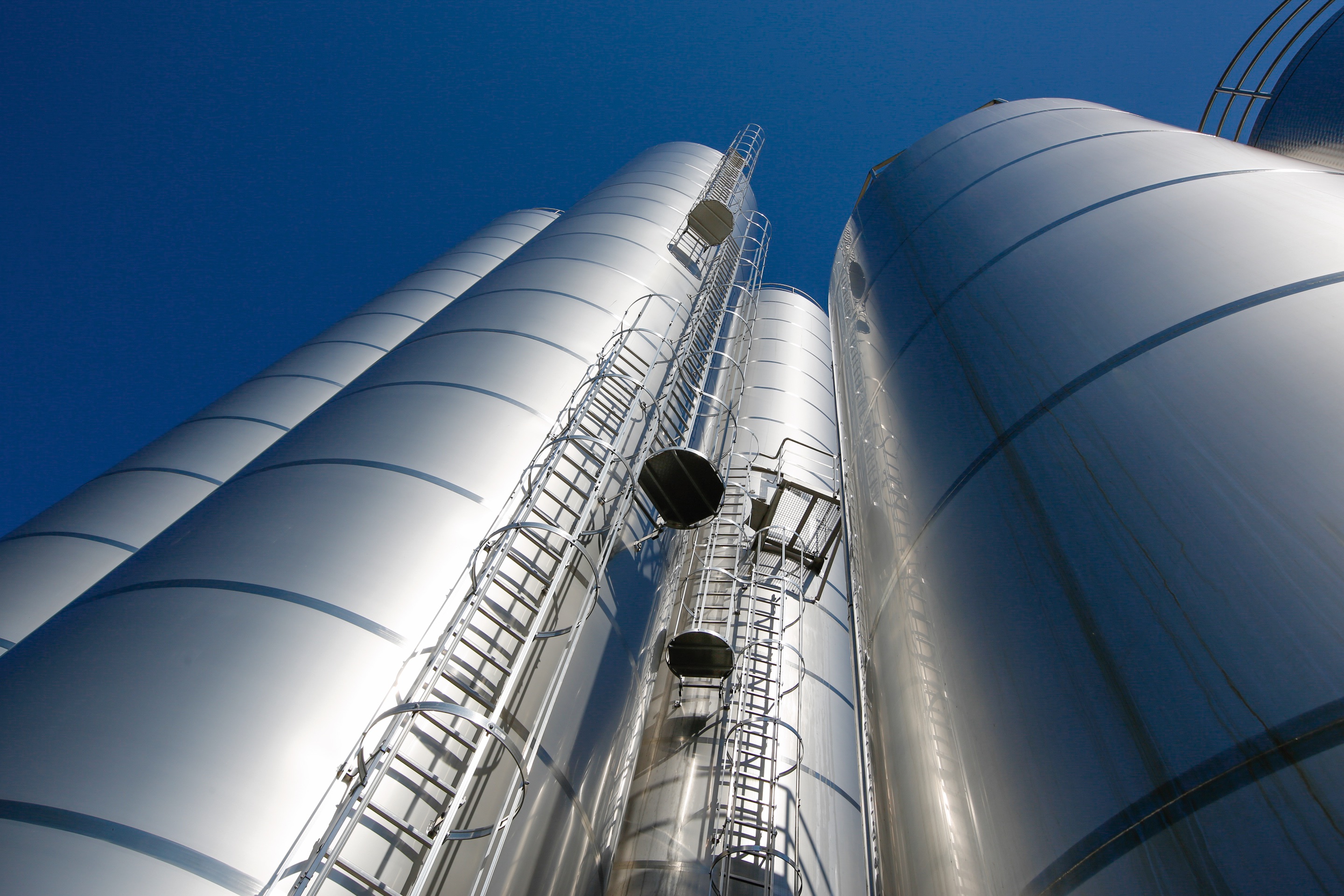
VEGAPULS 64 facilitates maintenance work
VEGA has been working together with the company for a long time. 10 to 12 VEGA radar level transmitters are currently in use. Martin Schneider, master electrician at Berglandmilch says he would have liked to have more, using the whey tanks as an example.
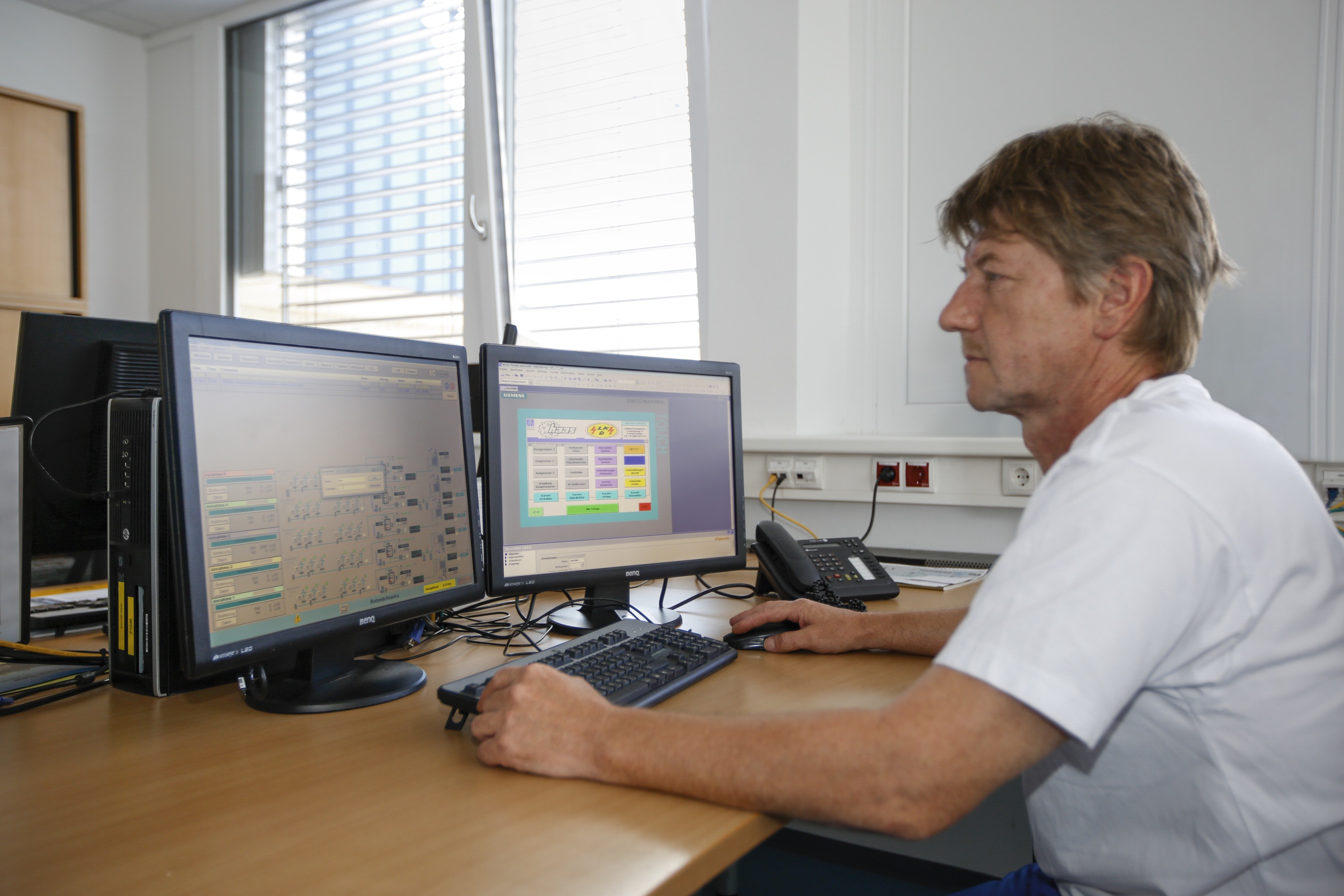
In the past, many tanks were equipped with level measuring systems, but these were usually delivered within the framework of a complete contract. In practice, this did not always prove to be particularly successful as the equipment suppliers were not level measurement specialists. A differential pressure system with sensors near the tank bottom was often supplied as standard equipment. From a maintenance point of view this was very labour intensive, as Schneider reports. "During the cleaning of the whey tanks, for example, mechanical damage to the diaphragm in the pressure transducers would occur again and again when a wrench fell into the tank." Another situation: the tanks are meticulously inspected at regular intervals. To do this, the milk technician has to climb into the tanks to inspect them from the inside. Again, there was a risk that the pressure transducers attached to the base could be damaged during each inspection.
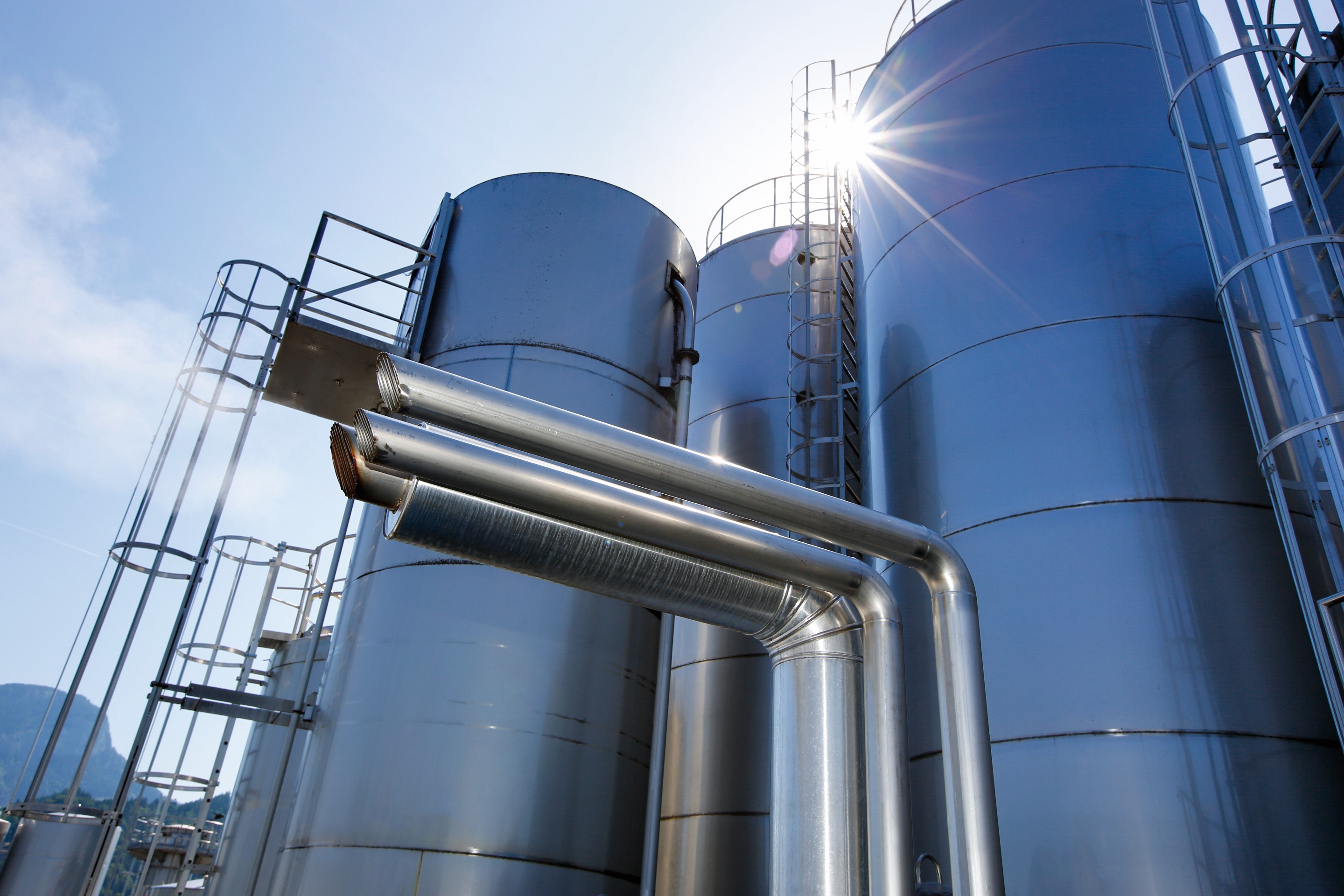
Hopes fulfilled
The three whey tanks were only put into operation in 2014. The situation became all the more unsatisfactory for Martin Schneider: apart from the mechanical problems, the existing level measuring system also created difficulties in other respects. Whey is not easy to measure using this kind of level measurement. "The protein foam caused problems repeatedly, the tank also has welds and an agitator. The spray balls interfere with the measurement too," explains Schneider.
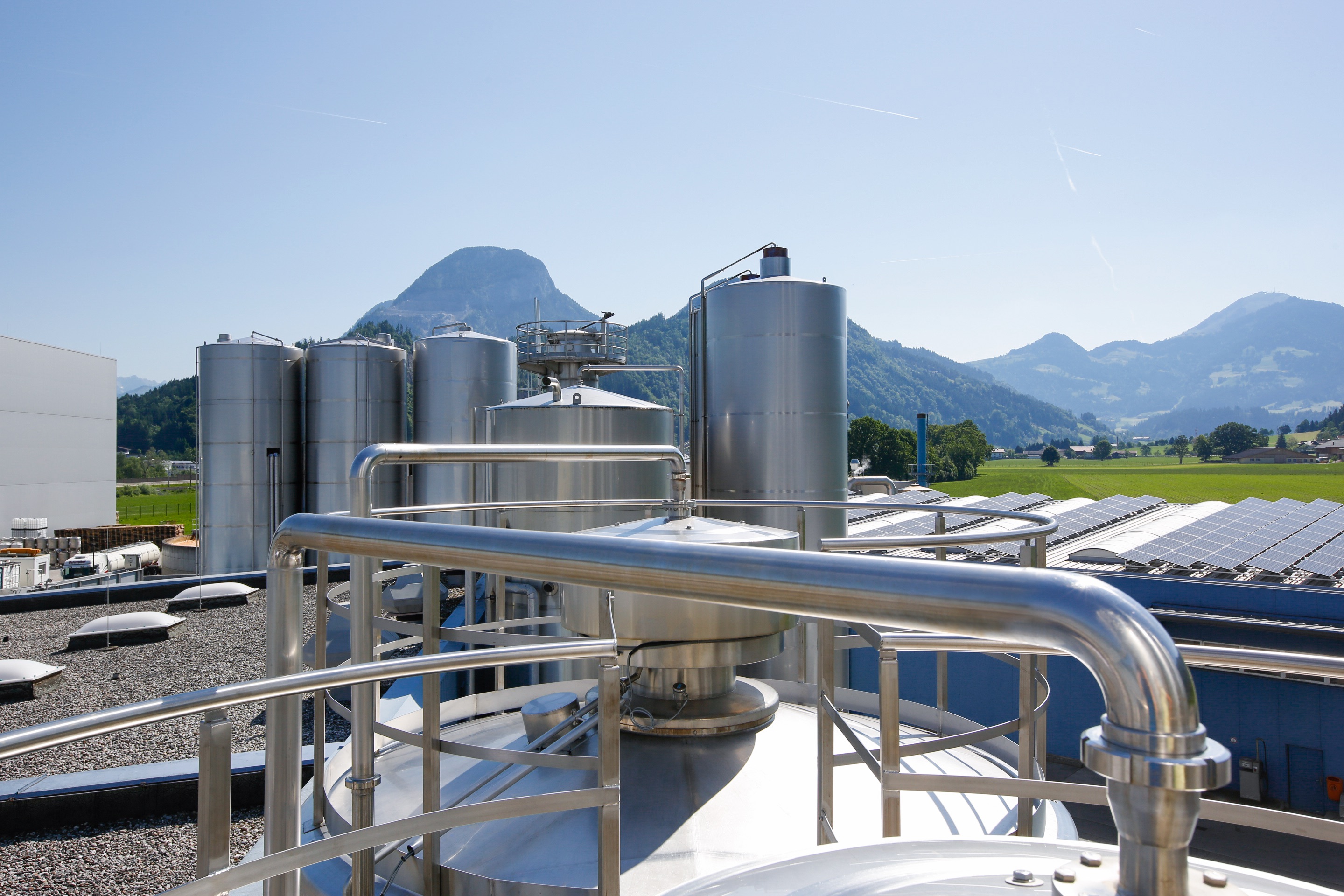
There was a further challenge: At the end of the tanks there is a centrifuge with an output of 50,000 litres per hour. The problem is that the tanks have a flat bottom, which makes an exact zero measurement impossible with the pressure transmitter mounted a few centimetres above the bottom.
As a result, air was repeatedly sucked into the centrifuge. Alpina, a company that processes the whey at the Tirol Milchwerk in Wörgl, was particularly affected by this. The whey is delivered to it via pipeline. These circumstances caused the fat content of the whey to change, which led to problems with Alpina's filter systems.
Meanwhile, the electrical engineering team had already heard that VEGAPULS 64, a new radar level transmitter, was under development. Schneider had high hopes that its high measuring frequency of 80 GHz would result in better focusing and higher resolution of the measuring signal. As soon as the first ones became available in 2016, all whey tanks were outfitted with the VEGAPULS 64 radar sensor.
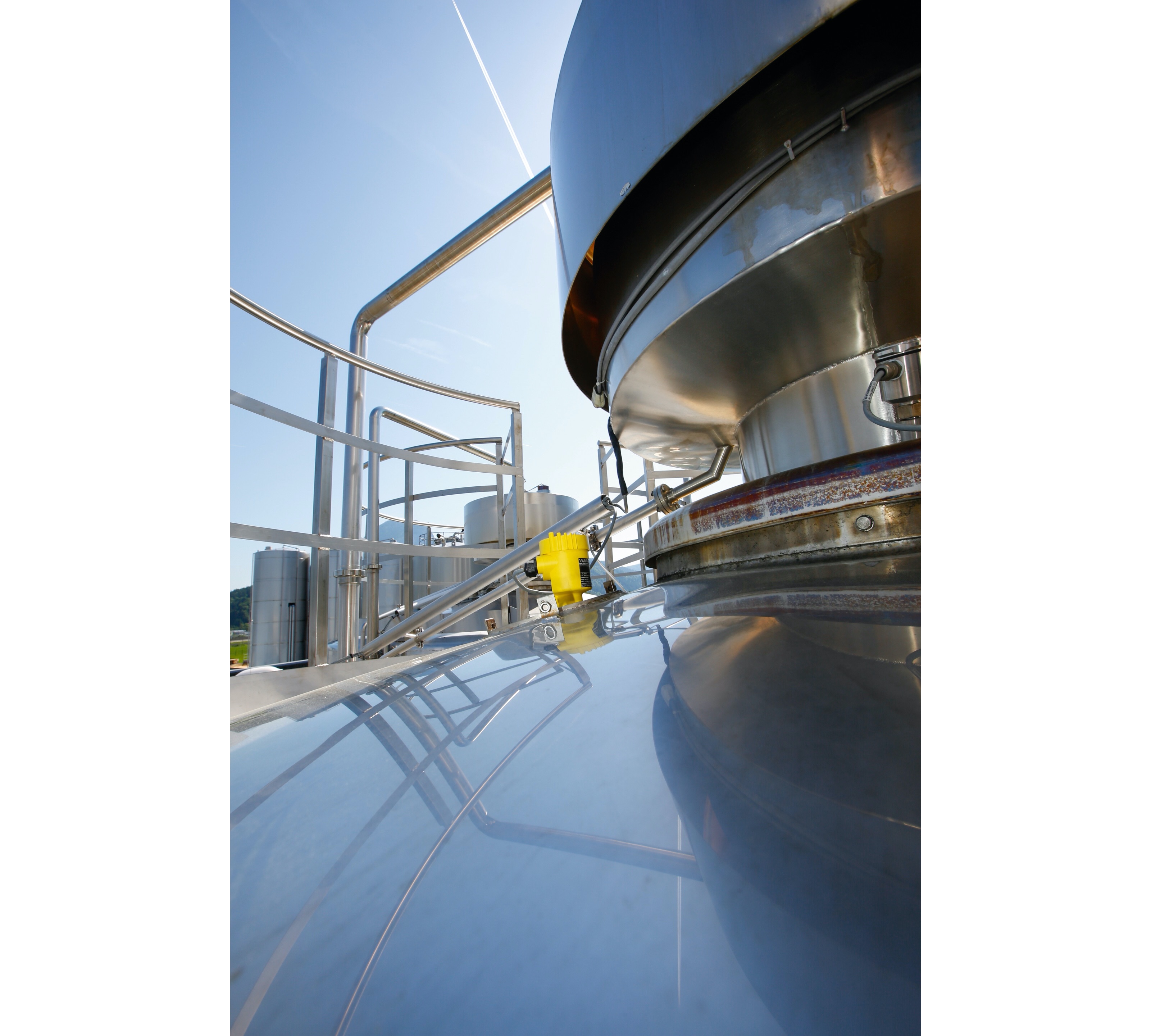
An old cure: whey
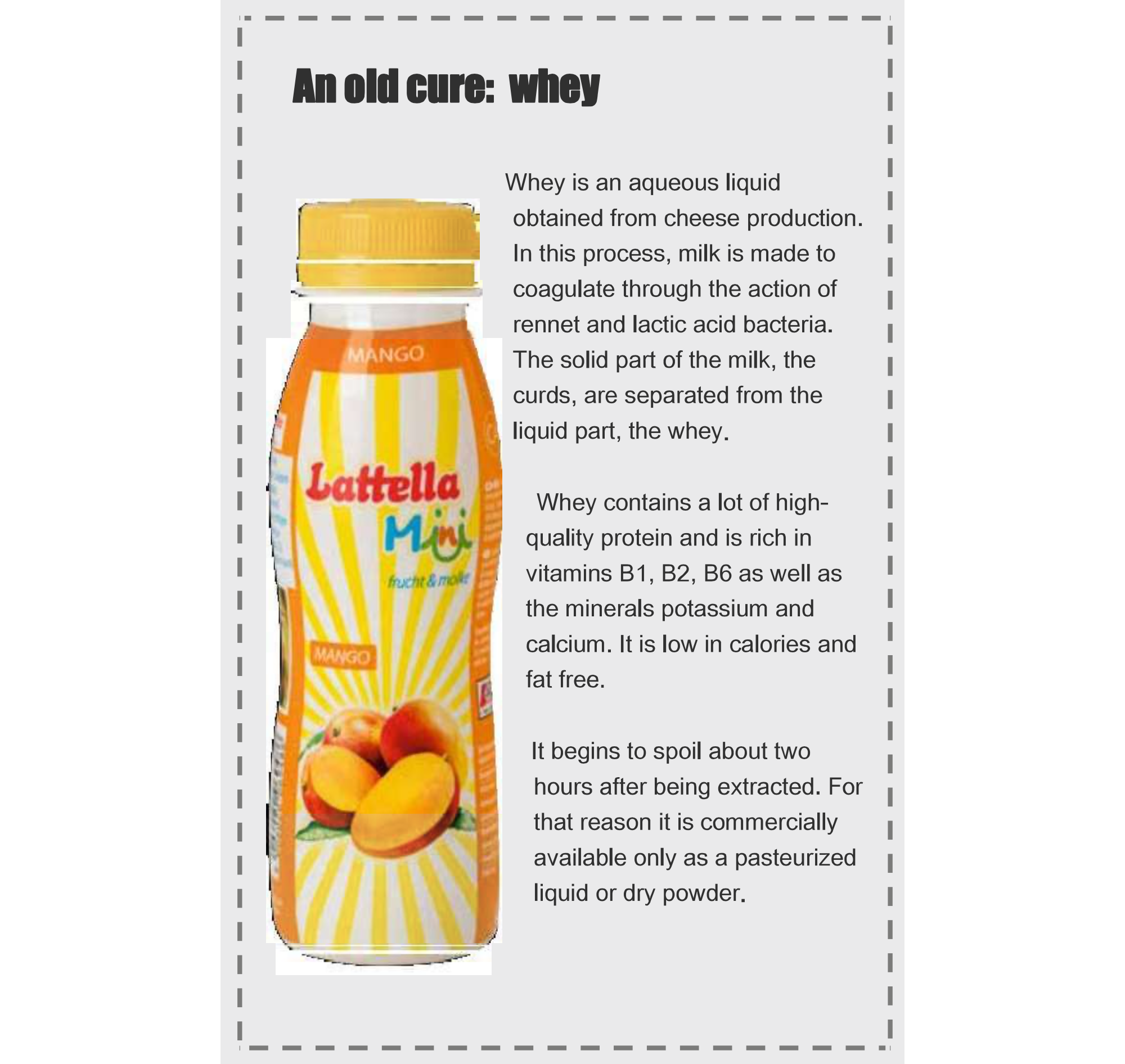
Author: Jürgen Skowaisa, Produktmanagement Radar, VEGA Grieshaber KG